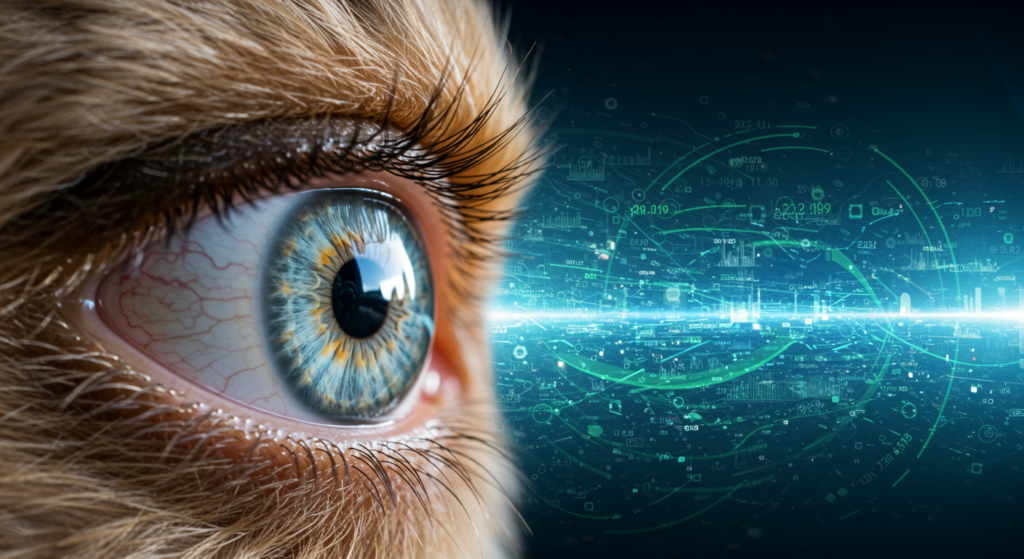
Humanoid Robot Breakthrough: Chinese Eagle-Eye Vision and Powerful AI
Introduction to a New Era in Humanoid Robots
Imagine robots that don’t just follow commands but adapt and interact like humans—it’s happening now, thanks to China’s latest innovations. Humanoid robots are evolving rapidly, blending eagle-eye vision with powerful AI to mimic human actions and navigate real-world challenges with ease. This shift is redefining automation, from factories to homes, and positioning China at the forefront of a tech revolution that’s both exciting and transformative.
Have you ever wondered what it would be like to have a robotic assistant that learns from its surroundings? These advancements are making that a reality, pushing the boundaries of what’s possible in everyday life and industry.
China’s Vision: The Rise of Next-Generation Humanoid Robots
In the past year, China has poured resources into humanoid robots, focusing on embodied intelligence that merges hardware, AI, and sensors into seamless systems. Picture this: at the 2025 Beijing E-Town Half-Marathon, the Tiangong Ultra robot didn’t just participate—it outran expectations, conquering slopes, stairs, grass, gravel, and sand at speeds up to 12 km/h. This feat relies on cutting-edge 3D vision and sensors paired with CPUs handling 550 trillion operations per second, marking it as a global leader in robotics.
What makes this so impressive is how these robots handle unpredictable environments, much like a skilled athlete. As China ramps up its efforts, we’re seeing a blend of speed, precision, and adaptability that could change how we approach daily tasks.
The Power of Eagle-Eye Vision in Humanoid Robots
Vision is the key to making humanoid robots truly useful in human spaces, and China’s eagle-eye systems are taking this to new heights. Robots from companies like UBTECH boast visual capabilities sharper than ours, enabling real-time object detection, spatial mapping, and quick decisions. This technology processes massive data streams in an instant, ensuring safe, precise movements whether in a bustling factory or a busy home.
Think about it: if a robot can spot and avoid obstacles faster than we can blink, it opens doors to safer collaborations. For instance, in automotive plants, these systems help robots work alongside humans without a hitch, reducing accidents and boosting efficiency.
AI That Learns, Adapts, and Decides for Humanoid Robots
Beyond basic functions, humanoid robots now feature Turing-class AI chips with up to 3,000 TOPS of power, allowing them to learn on the fly and make independent choices. Robots like “Iron” are already teaming up with workers in EV factories, assembling vehicles with little oversight and even adapting to new tasks mid-operation. Soon, they might handle everything from office admin to home chores, acting as reliable partners.
Here’s a tip: if you’re in manufacturing, consider how integrating such AI could streamline your workflow. It’s not just about automation—it’s about creating systems that evolve with your needs, making work smarter and less repetitive.
National Strategy: Driving Humanoid Robots to the Forefront
China’s government is all in on this tech, with the 2025 Government Work Report emphasizing investments in embodied intelligence. Cities like Beijing and Shanghai are leading the way: Beijing has launched a $1.4 billion fund for robotics R&D, while Shanghai aims to build 10 top humanoid brands and hit a $14 billion smart robotics market by 2025. As a result, China controls 63% of the global humanoid robots supply chain and is gearing up for mass production this year.
This strategic push isn’t just about numbers—it’s about fostering innovation that could spark economic growth worldwide. If you’re tracking tech trends, keep an eye on how these policies accelerate real-world applications.
- Beijing: Funding innovation hubs to turn ideas into commercial products.
- Shanghai: Setting ambitious goals to dominate the market and create jobs.
Key Features of the Latest Chinese Humanoid Robots
Let’s break down what sets these humanoid robots apart, with features that make them versatile and future-proof.
| Feature | Details |
|---|---|
| Eagle-Eye Vision | Real-time 3D mapping that’s sharper than human sight, ideal for dynamic environments. |
| Powerful AI | Over 3,000 TOPS for adaptive learning and autonomous decisions. |
| Mobility | Speeds up to 12 km/h across terrains, with 60+ joints for fluid, lifelike movements. |
| Open-Source Platform | Allows developers to customize and innovate quickly. |
| Human-Centric Design | Built for roles like factory workers or personal assistants, emphasizing safety and interaction. |
These elements make humanoid robots not just tools, but intelligent collaborators. For example, in a warehouse scenario, their mobility could mean faster, error-free operations.
Applications: Transforming Industries with Humanoid Robots
The real magic of humanoid robots lies in their applications, from enhancing safety in manufacturing to providing companionship at home. In factories, they’re taking over repetitive or dangerous jobs, like handling heavy machinery, which cuts risks and ramps up productivity.
- Manufacturing: Robots handle hazardous tasks, allowing humans to focus on creative work—imagine a world where assembly lines run smoothly without endangering workers.
- Logistics: They move loads and assemble parts with pinpoint accuracy, potentially slashing delivery times.
- Personal Assistance: Envision a robot helping with elderly care, reminding you of appointments, or even cooking meals, all while learning your preferences.
- Military and Security: For the PLA, these robots offer support in disaster zones or complex operations, blending strength with smart decision-making.
If you’re in logistics, adopting this tech could be a game-changer—start by evaluating how robots might integrate into your current setup for better efficiency.
Competitive Landscape: China and the Global Race in Humanoid Robots
China isn’t alone in this race; companies like Agility Robotics in North America are scaling up, planning to produce 10,000 units a year with partners like Amazon. Yet, China’s edge in market share and open-source approaches gives it a head start, making humanoid robots more accessible and customizable globally.
This competition is healthy—it’s pushing everyone to innovate faster. What do you think: Could collaborative efforts between countries speed up advancements even more?
Challenges and Opportunities in Advancing Humanoid Robots
While the progress is thrilling, challenges like ensuring safe human-robot interactions and building reliable supply chains remain. Ethical considerations, such as how these robots handle decisions in sensitive situations, are crucial to address.
On the flip side, opportunities abound with government support and funding. For instance, as humanoid robots develop social reasoning, they could assist in healthcare, understanding patient needs through subtle cues.
Toward Advanced General Intelligence in Humanoid Robots
We’re on the brink of Artificial General Intelligence, where humanoid robots might fully grasp human emotions and intentions. Early versions already show promise in multi-modal learning, like interpreting gestures during interactions, paving the way for seamless partnerships.
A hypothetical scenario: In a nursing home, a robot could not only monitor health but also provide emotional support, adapting to residents’ moods. This evolution could transform care industries, but it starts with thoughtful development.
Conclusion: Blurring the Line Between Science Fiction and Reality
China’s humanoid robots, with their eagle-eye vision and powerful AI, are bridging the gap between imagination and reality, from industrial settings to personal lives. They’re not just automating tasks—they’re fostering intelligent collaborations that enhance our world.
As these technologies expand, what excites you most about their potential? Share your thoughts in the comments, explore more on our site, or subscribe for updates on the latest in robotics innovation.
References
1. “China’s Military Aims to Harness Coming ChatGPT, Robotics” from Defense One: Link
2. YouTube video: Tiangong Ultra demonstration: Link
3. YouTube video: UBTECH robotics showcase: Link
4. “Chinese Humanoid Robot Market Opportunities” from China Briefing: Link
5. “China Plans to Mass Produce Humanoids by 2025” from The Robot Report: Link
6. YouTube video: Advanced AI in robotics: Link
7. ArXiv paper on embodied intelligence: Link
8. YouTube video: Robotics applications: Link
humanoid robots, Chinese AI, eagle-eye vision, embodied intelligence, robotics innovation, humanoid robot applications, AI-powered robots, China’s robotics advancements, robot intelligence, future of robotics







